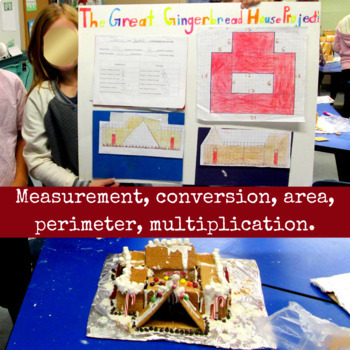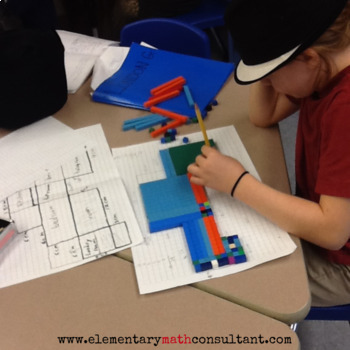Winter Math Project: The Great Gingerbread House Project
- Zip
What educators are saying
Description
"This is extremely creative and thorough! Everything is provided for you, to make this exciting time of year teacher friendly! Thank you for creating such a detailed project!"
- TpT Review
Hello teachers and parents!
This incredible edible project is so much fun to do with students in the winter. Whether it's for the days before winter break while they're wiggly or when they return from the break when they're, well, wiggly, this project will motivate and excite every student.
Don't be fooled by the photos of houses - this project requires A LOT OF MATH! Students will find area and perimeter, draw front and side silhouettes of 3D houses, and multiply, multiply, multiply. This project will take one to two weeks to complete.
Learn more about the project in this Edutopia article:
https://www.edutopia.org/article/great-gingerbread-house-project
This inclusive project works for ALL students. It is visual, hands-on, and has many entry points for solving each math problem.
**Please download the preview before purchasing. This amazing project does require quite a few materials, like graham crackers, icing, and aluminum foil. The preview gives a complete list for 48 students.**
This project provides these activities:
- area and perimeter review
- floor plan practice (more area and perimeter!)
- create your own floor plan
- create a floor plan with a partner
- find the area and perimeter of your house's floor plan
- estimate materials need to build your house based on your area and perimeter
- record predictions and actuals as you build
This project provides these materials:
- detailed, step-by-step descriptions for the teacher
- grid paper
- graham cracker templates
- supply list for 48 students
- guidance for successful student partnerships
- student and teacher checklists for organization and accountability
- project norms/agreements
- teacher cheat sheet for areas and perimeters of houses
Your students will have a blast and be so engaged with the math in this project!
Warmly,
Jeannie Curtis
https://www.teacherspayteachers.com/Store/Elementary-Math-Consultant
Instagram: @elementarymathconsultant
PS: Want to earn TpT credit?
From your My Purchases page, click Provide Feedback. You'll earn credit towards future purchases every time you rate a product! Also, I find it super helpful to see your ratings and read your comments, so thank you!
You can also learn about my new products and sales by following me. Just click the green star on my store page!





